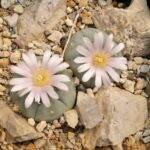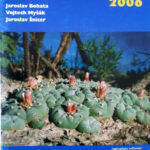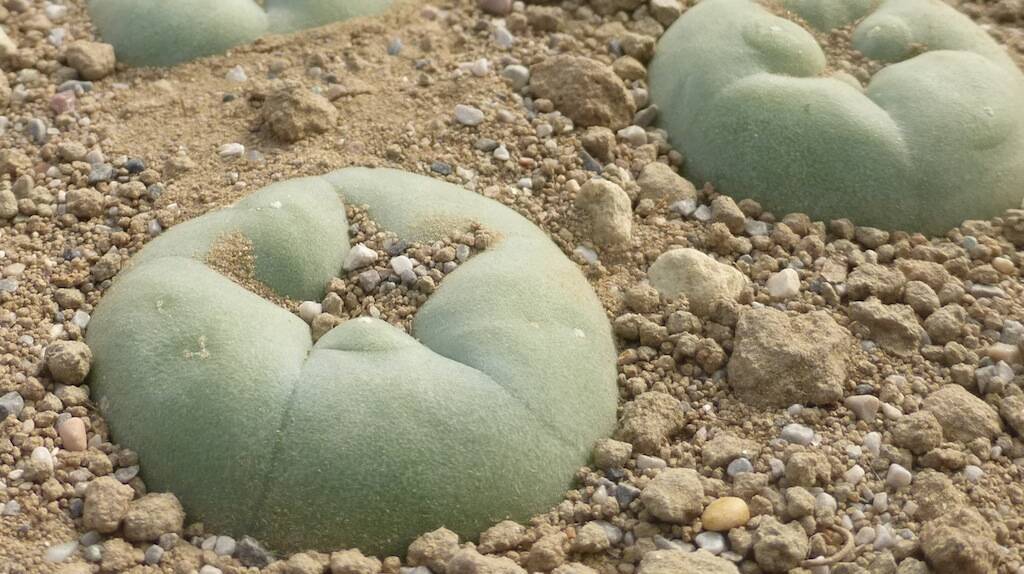Yes, it can be grown but not sold… no, it cannot be cultivated nor sold… Yes and no at the same time: only young specimens can be raised because, after seven or eight years, the plant produces the notorious mescaline, and it becomes illegal (therefore, it must be incinerated???). Yes, you can keep it, but only if purchased before 2006, because it’s from that year that the plant was included in the “Testo Unico sulle Droghe” (Law-framework on drugs). In Italy and in many other European countries, about the cultivation of Lophophora williamsii (a Cactaceae also known as “peyote” or “peyotl”), people have been said everything and its opposite. This is because in Italy and in some other European countries, the possession and the sale of this cactus have been the subject of normative interventions, but, as it often happens, laws are muddled, lacunose, obscure and, from a logical point of view, sometimes not very coherent. For example: in the tables attached to the Italian law on drugs, it is mentioned only Lophophora williamsii, when cactus experts know very well that of Lophophora, besides williamsii, there are several other species: decipiens, diffusa, fricii, koehresii, alberto-vojtechii.
In this article, relying on official sources, we will know better this particular kind of cactus and see in detail what the Italian law exactly says. Please remember that this plant is illegal in Italy as well as in other states, so you better check the legislation of your country to avoid taking risks! (…)
Introduction
So what? Only the williamsii is banned by the Italian law, while the other species of Lophophora can be cultivated and sold safely? This too is a widely debated topic and – it seems – still lacking a univocal answer, although prudence suggests that, to avoid criminal and pecuniary troubles, when in doubt, it is better to level with the law and consider all Lophophora in the same way. Also because if you run into legal problems, you can try to explain to the magistrate that that plant is a Lophophora, but in reality, it’s a koehresii and not a williamsii, and that the quantity and quality of alkaloids contained is not the same and so on… Not to mention that many other cacti (see Trichocereus pachanoi, so-called “San Pedro”, for example) – like many other non-succulent plants – produce toxic substances, and despite this, they are not considered drugs by the Italian law. Anyway, since you can read anything and everything on the internet and since the news – the real ones – about seizures, arrests, criminal convictions, fines and penalties for possession and sale of “peyote” are not lacking, let’s try to clarify, as much as possible, a subject often debated among cactus lovers.
Description

Firstly, some notion: Lophophora is a genus belonging to the family of Cactaceae that grows wild in some areas between South Texas and northern Mexico, in Querétaro and San Luis Potosì states. Some scholars accept only two species, williamsii and diffusa, while others also indicate the species decipiens, fricii, koehresii and the more recent (in terms of identification) alberto-vojtechii. A distinction accepted by a good number of researchers is that the genus Lophophora is commonly divided into two groups: the first includes the various forms of the species williamsii; the second the species associated with Lophophora diffusa and is identified with the term Sectio Diffusae. All Lophophora have in common the globular shape of the stem, with a diameter of a dozen centimetres in the adult specimens, green to blue in colour, rarely tufted (e.g. in the caespitose form), characterized by the total absence of spines and by the presence of hairs on the areoles and on the apex. The root is always thick, long and fleshy (“taproot”, as in the Ariocarpus).
These plants live in highly clayey soils, and during the dry season, they deflate until they sink almost entirely into the ground, leaving a deep furrow along the stem’s circumference. They grow often confused among shrubs, stones and low vegetation, so they’re not entirely exposed to direct sun. The flowers, which sprout in late spring from the plant’s apex, are small, and the colours can vary from white to pink to deep pink. Fruits consist of intense pink berries, inside of which are formed black and tiny seeds.
Mescaline: natives and counterculture
As is the case with many other plant species (not only succulents), Lophophora plants produce toxic substances in the tissue that forms their stems: this is a natural defence against herbivorous animals such as goats, which might eat them. The most known substance produced by Lophophora (some researchers claim that it’s only of the williamsii species) is mescaline, a potent alkaloid isolated for the first time in 1897 by the German chemist Arthur Heffter and then synthesized in 1919 by the Austrian chemist Ernst Spath.
Native Americans, although without the scientific knowledge of European chemists, since hundreds of years know very well the power of mescaline, so much that the so-called peyote (or peyotl) has always been considered sacred, and it is used in shamanic ceremonies because of its assumption, by mescaline, causes hallucinations and significant psychic alterations. In other words, according to the beliefs of natives, peyote puts people in contact with gods, opens the so-called “doors of perception” described for us westerners by Aldous Huxley and puts people in relation with new and parallel realities. It’s because of this tradition – and from its accurate description in Huxley and later of Carlos Castaneda‘s essays – that between the 60’s and ’70s, peyote assumed a primary role among hallucinogenic drugs (among them the famous LSD, lysergic acid diethylamide).
It spread among the exponents of the American and European counterculture and among the artistic and intellectual movements that drove the ideological revolution and culminated with the Summer of Love (just think of the famous rock group The Doors, which adopted the name taking the first part of the title of Huxley’s essay, “The Doors of Perception”).
Still today, the use of peyote is at the base of shamanic ceremonies. Only a limited and authorized number of authentic natives – shamans – has the legal permission to harvest and consume the “head” of Lophophora: of the plant is in fact cut only the apical part to avoid the specimen to die, and also from this device is evident the respect these people have for this plant and, generally, for Nature.
The Italian regulations
Going to what interests those who cultivate cacti for passion: is the commercialization and the cultivation of Lophophora allowed in Italy? The answer, undoubtedly for the williamsii species, but also for the other species, is no. The italian law expressly forbids the cultivation of Lophophora, and moreover, it is to be excluded that Lophophora plants can be commercialized in the Italian territory. Some European countries have laws similar to ours, while others do not consider illegal peyote’s cultivation and sale.

In Italy, the reference legislation is the DPR (Decree of the President of the Republic) no. 309 of 1990 – “Consolidated text of the laws concerning the regulation of narcotics and psychotropic substances, prevention, treatment and rehabilitation of drug addiction states” – with the integrations and amendments made by Law no. 49 of February 21, 2006, which, among other things, adds some tables containing the list of narcotic and psychotropic substances, and the further integrations made by the most recent Law no. 79 of May 16, 2014. Article 26 of Presidential Decree No. 309 is dedicated to “Prohibited cultivation and production” and, expressly, defines that “it is prohibited in the State territory to cultivate the plants included in Tables I and II referred to in Article 14” of the same Presidential Decree. Article 14 shows a long list of substances and plants like, for example, coca leaves, opium, amphetamine-type substances, cannabis Indica. Point 7 of the article adds to the list “any other natural or synthetic plant or substance which may cause hallucinations or serious sensory distortions and any substance obtained by extraction or chemical synthesis which causes the same type of effects on the central nervous system“.
Well, Lophophora williamsii, as it has been said and as it is widely proved by scientific studies, contains mescaline, which is certainly able to “cause hallucinations or serious sensory distortions”. As a further confirmation, it is sufficient to read the tables enclosed to the Presidential Decree (integrated by the modifications subsequently intervened) to find the following indication (Table I): “Lophophora williamsii plant (Peyote)”. A little further on, in the same Table I, it is also indicated mescaline. Those who wish to read a reliable analysis on the DPR 309, updated with subsequent amendments and additions, can click this link for going to the Ministry of Health’s Web portal.
This is what is provided by the Italian law, from which it can be inferred unequivocally that the cultivation (and consequently the sale) of Lophophora williamsii is forbidden. As authentic cactophiles, interested in plants and not in the “high”, we can legitimately turn up our nose, but this is the reality. However, scrolling through the internet, it is easy to come across many considerations – often discordant – starting from the one according to which Lophophora, if grown in pots and at our latitudes, are not able to produce the same amount of mescaline produced by plants in habitat, which would make our plants ineffective or at least very weak from the hallucinogenic point of view. I am not a chemist, and I have never conducted experiments to verify whether this is true or not, but the fact remains that, regardless of the amount of alkaloid contained in a plant, if this plant is a Lophophora williamsii, the Italian law considers it as cannabis.
Some claim that Lophophora is capable of producing mescaline only from seven, eight years onwards. Listen, I am not a chemist, and I have never verified the truthfulness of this statement, but the law, besides not mention about the plants’ age, does not leave much room for creative interpretation, and if it is the Lophophora williamsii, there’s little you can do, whether the plant in question is three years old or fifteen. The same arguments apply to those who consider the quantity of the narcotic substance in the plant (in this case, mescaline) or the cultivation aim, comparing the mere cultivation to the so-called “personal use” or the dealing. In short: those who call into question the number of alkaloids maintains that if the mescaline contained in the plant does not exceed certain limits, then it is allowed to cultivate it. Yes, but where are indicated these limits for mescaline in peyote? The table attached to the Framework-law od Drugs shows three parameters for prohibited substances: common name, chemical name and “other name”, without listing quantities or concentrations. Also, how do you know how much mescaline that specific Lophophora contains? As we have seen before (cultivation equals personal use and sale equals dealing), the law is quite precise and prohibits tout court cultivation, let alone cultivation for sale.

Some small margin of interpretation could remain on the species. I deliberately use the conditional because I repeat, we are in the field of mere supposition. The legislation speaks only of Lophophora williamsii. It could be inferred – with strict interpretation – that all other species (diffusa, decipiens, fricii, koehresii, alberto-vojtechii) are cultivable and marketable. What is not expressly forbidden, in fact, is tacitly allowed. Frankly, I would be of this opinion, but as a matter of prudence, here in Italy I would never feel like encouraging anyone in the cultivation and sale of even those species of Lophophora not mentioned in the DPR. This is simply for practical reasons: in case of a report (or inspection in greenhouses and commercial nurseries, as documented by the chronicles), once the plant is identified as Lophophora, the complaint is triggered and between this and the final judicial ascertainment that that or those plants do not belong to the species williamsii but, for example, to the species fricii (without considering that on the species other than williamsii and diffusa the same researchers are divided), it could take many bad months and a fair amount of money to be paid to the lawyer… be that as it may, the judge adopts the thesis of a literal interpretation and doesn’t give an extensive explanation, assimilating to the williamsii any other species of Lophophora.
Seeds and fruits
Finally, the silence in italian legislation regarding Lophophora williamsii‘s seeds and fruits is rather curious: in this case, authoritative sources seem to confirm the thesis that there’s no prohibition of commercialization or possession of them. In other words, one can legitimately keep, exchange and sell Lophophora williamsii‘s seeds and fruits (and consequently of all other Lophophora species). The law says nothing about this. On the contrary, the Presidential Decree states: “it is forbidden in the State territory the cultivation of plants included in the tables (…)”. The law talks about plants, not about seeds and fruits. Clear, isn’t it? Because the fruits of Lophophora are notoriously delicious and usually the seeds are kept as a souvenir and not to be sown… The paradoxes of the Italian law…
References
For the editing of this article, I consulted, among the various sources, the volume “Lophophora 2006” published by the Cactus Association Trentino – Südtirol, then the book “The Cactus Family” (author Edward F. Anderson) and, finally, the official site of the Italian Ministry of Health and the site Altalex – Quotidiano online di informazione giuridica (Online Newspaper of Legal Information).
SUBSCRIBE TO THE SITE – If you liked this article, subscribe to the site to have access to all the contents for one year or three months depending on the formula you choose. Here you will find terms and conditions.
SUBSCRIBE TO THE NEWSLETTER – If you want to receive the free newsletter every time new content is published (even if you have not subscribed to the site), fill in the fields at this link!
Correlated articles
How to repot cacti and succulent plants
Substrates for cacti and succulents
The correct soil: the materials you can use
© The texts, videos, photos and graphic elaborations of the site “Il fiore tra le spine” are original material and are covered by copyright. It’s forbidden to reproduce them in any way.



